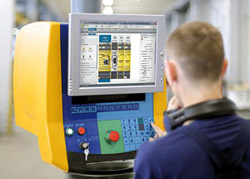
Posted to News on 23rd Nov 2018, 06:46
How changes in legislation benefit not impact on productivity
Kevan Cowley of Wieland Electric looks at the changes in legislation and how this can benefit and not impact on production rates.

The world of machine building has changed dramatically over the past 10 years and this is mainly down to the rise in demand for improved safety regulations and increased pressure of throughput and downtime of production machinery. Wieland Electric has been aware of these demands and sees a correlation with increased safety and machinery downtime and has been working with many OEMs to help understand the changes in legislation and how this can benefit and not impact on production rates.
Understanding the legislation
The Machinery Directive 2006/42/EC applies to the design, construction, placing on the market or putting into service of machinery. In particular, it specifies requirements relating to the design and manufacture of machinery in order to help improve its safety.
It applies to complete machines, assemblies of machines, partly completed machines, equipment intended for incorporation into machines, safety components and certain other associated equipment. Under some circumstances, the manufacturer must involve a third party, known as a Notified Body. In other cases, the manufacturer can self-certify, or can voluntarily enlist the help of a Notified Body.
EN ISO 13849 is a safety standard that deals with safety-related design principles of employed control systems to establish different safety Performance Levels (EN ISO 13894-1 / EN ISO 13894-2).
Wieland Electric has helped many customers understand and even obtain TUV-certified qualifications with its solution approach and training programs, offered to work within these legislation changes, and then assisted in developing solutions to implement these standards, along with good practice, engineering solutions and innovative products.
Due to these and many other changes in legislation, along with the need for decreased downtime, top-performing manufacturers are using contemporary approaches to safety. These industry leaders are using a combination of integrated safety solutions and new international standards to optimise their machinery uptime and plant productivity. Simply put, safety is no longer just about safety. It is also about minimising the safety-related downtime events that hinder the ability to be more productive.
The key is to expect safety events, which inevitably occur when someone is in danger, and to utilise safety technologies that can minimise the length of those events. This begins in the design stage. Designing safety into your machinery in advance, with an architectural view rather than a bolt-on solution, can result in a more holistic system that can be optimised for faster recovery.
Understanding the standards that apply to your various machinery designs, and applications and when they make allowances for the latest safety technologies, is also crucial. A recent Control Design magazine survey found that the top safety-design headache (52 per cent) for machine builders was determining which standards and regulations apply. Similarly, nearly two-thirds of manufacturers said "compliance with regulatory and safety standards" is the biggest driver behind their improved safety practices.
Safe speed

This approach has its own advantages for different industries - for example, the printing industry, where safe speed can help an operator more quickly and safely clean the rolls on a printing press by reducing the speed and even the direction of the rolls. This helps shorten the duration of the cleaning process because the rolls can be cleaned continuously while they turn. It also can improve safety because the rolls are operating at a decreased speed and are now turning outward, away from the machine, instead of inward.
Likewise, in the food industry, in the event of a production issue, safe-speed monitoring can allow an operator or maintenance technician to open a safety door and make adjustments, such as correcting a dispensing nozzle, while production continues at a reduced rate. This will allow the operator or technician to monitor his or her adjustments as they are made, eliminating the need to continually shut down and restart the machinery for each adjustment until the issue is resolved.
Both of these examples are where the introduction of the safety systems is initiated at the design stage, not only improving the efficiency of the process but maintaining the current safety standards.
Key standards
There are three key standards to consider:
- EN 61800 5-2, Adjustable speed electrical power drive systems - Part 5-2: Safety requirements - Functional
- EN ISO 13849-1, Safety of machinery. Safety related parts of control systems - Part 1: General principles for design
- EN 60204-1, Safety of machinery - Electrical equipment of machines - Part 1: General requirements
This approach by OEMs and other machine designers will also produce cost savings within the design and development of the machine, as the upfront structure will mean it is less likely to require bolt-on safety devices or retrofits after the design stage to meet safety standards.
In addition to the cost savings at the design stage, using programmable safety controllers like the Samos Pro enables the diagnostics of a machine to be established far quicker and more easily in the event of any faults occurring within the safety system. With the increasing use of remote access cloud technology and secure routers, such as Wieland's Wie-Service 24 cloud and VPN router technology, it is even faster and simpler to access and diagnose faults and get production back up and running from anywhere in the world.

So, to summarise, the modern machine builder is embracing new safety legislation and standards, using them as tools and guidelines to produce safer, more efficient machines with benefits for both the OEM machine builder and end user alike.
Follow the link for more information about the machinery safety products, services and training availabel from Wieland.
Want the latest machine building news straight to your inbox? Become a MachineBuilding member for free today >>
Ash House, Tanshire Park
Shackleford Road
GU8 6LB
UNITED KINGDOM
+44 (0)1483 531213

















